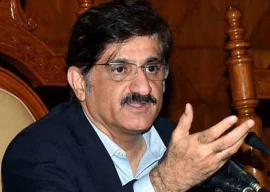
Niilofer Farrukh, the moderator, opened the discussion by explaining the concept behind the title, "It's as elusive as art and literature and is open to any interpretation because that is how we look at art," said Farrukh. In a surprising change of events, the moderator announced that the entire discussion would take place in Urdu because the language delineates a path in the history of art.
Akbar Naqvi, the author of Image and Identity, spoke about the inspiration behind his book and also emphasised the importance of the ancestral trail of art. Naqvi's book is a refreshing take on modern art that challenges the subversive, Eurocentric lens through which we perceive art.
The author is a staunch believer that the British infiltration in the subcontinent was responsible for initiating the identity crisis in the region that lingers till this day. "The English ruined it by introducing Monolithic Nationalism," said Naqvi. He reiterated the importance of solidifying and knowing local culture in order to recognise the rich art heritage that we possess in our country.
Noorjehan Bilgrami, author of Sindh Jo Ajrak, focused more on the social dynamics that make art so limited these days.
The author took a beautifully relevant quote from Jeb Dickerson to highlight the emphasis on art interpretation: "The sky, a perfect empty canvas, offers clouds nonetheless. They shift and drift and beg interpretation -- such is the nature of art." Bilgrami emphasised the dire need for a nucleus to be created. "Our society has become so fragmented that art has lost its cohesion."
Saima Zaidi, a communication designer and editor of Mazaar, Bazaar. Design and Visual Culture in Pakistan, described the correlation between words and art as a 'multi-modular concept'. "I find that when we look at artwork, we describe it through words and are constantly formulating images when we read literature," said the designer.
At the end, the audience bustled with questions, enquiring what kind of solutions and strategies can be worked out to ensure that art can be protected from further deterioration. Although time constraints meant no workable solutions could be discussed, the session left the audience with an interest to learn more about the history of art.
Published in The Express Tribune, February 7th, 2011.

















COMMENTS (1)
Comments are moderated and generally will be posted if they are on-topic and not abusive.
For more information, please see our Comments FAQ